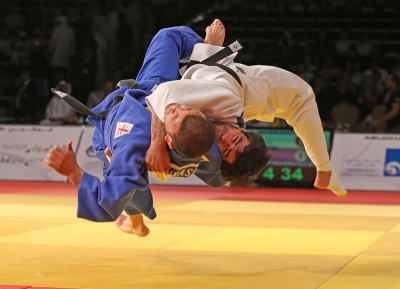
Judo was probably developed by Chinese Buddhist monks to defend themselves without hurting their attacker. By using holds, throws and falls the attacker’s size can be used against them.
There are no punches or kicks used in judo, it is mainly used for self defence.
Men’s judo competitions were first included at the Olympic Games in Tokyo in 1964 and were held regularly from 1972. World judo championships for women began in 1980, and women’s Olympic competition began in 1992. Japan, Korea, France, Germany, and Great Britain have consistently fielded the strongest teams in the Olympics, as did the Soviet Union during its existence.
Judo’s direction has changed since its inception. Kan? designed judo to be a safe, cooperative method of physical education. J?d?ka spend a great amount of time learning to fall safely. Even in randori, the person performing the throw (the tori) helps the person receiving (the uke) to the ground by holding onto his arm and guiding him to a safe fall. By contrast, in Western wrestling one does not help an opponent to fall, and coaches spend little if any time teaching their wrestlers how to fall safely. As judo competitions became more popular, however, j?d?ka began to exhibit the competitive spirit more usually found in Western wrestlers; they began concentrating on judo as a sport rather than as a drill or a way of life. The inclusion of judo in the Olympic Games marked the turning point in this transformation.
This competitive spirit can be seen in the change in the attitude of many j?d?ka in regard to scoring. Only clean throws demonstrating superior timing and a knowledge of body mechanics were rewarded with a score in the pre-Olympic period. Currently in judo, the scoring system awards an ippon (“one point”) for a conclusive technique that wins a match by its successful execution, a waza-ari (half point), and minor points (called yuko). In a major shift from traditional judo, in a modern match a j?d?ka will often play conservatively and work for a win based only on partial scores from minor points, rather than risking all in the attempt for an ippon. This shift to competitive judo has been aided by the success of European and Russian j?d?ka, influenced by their strong wrestling traditions and in particular the Russian development of sambo (which was itself based upon judo).
Credit : Britannica
Picture Credit : Google




